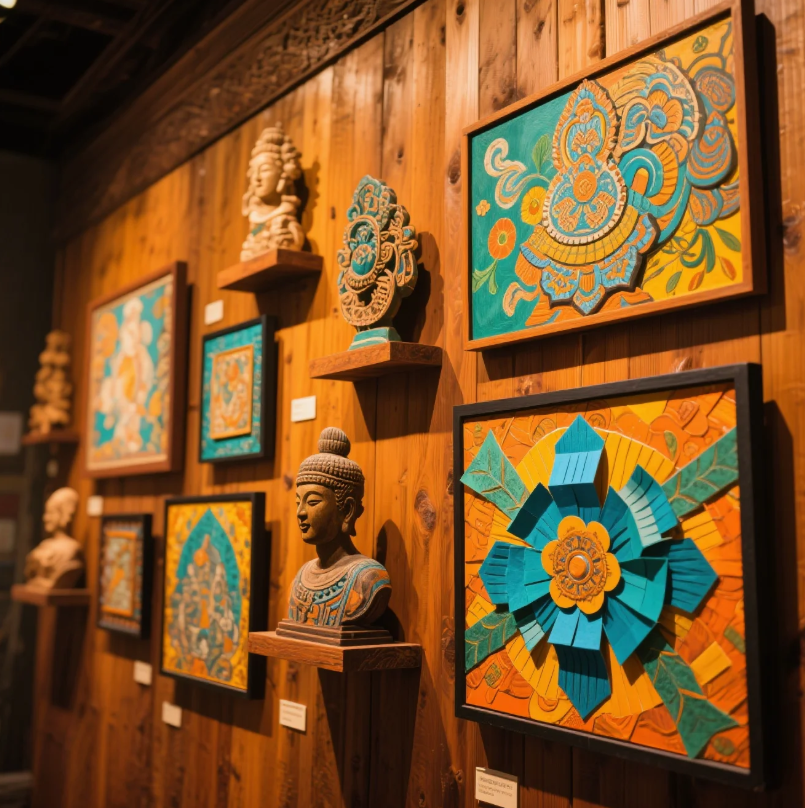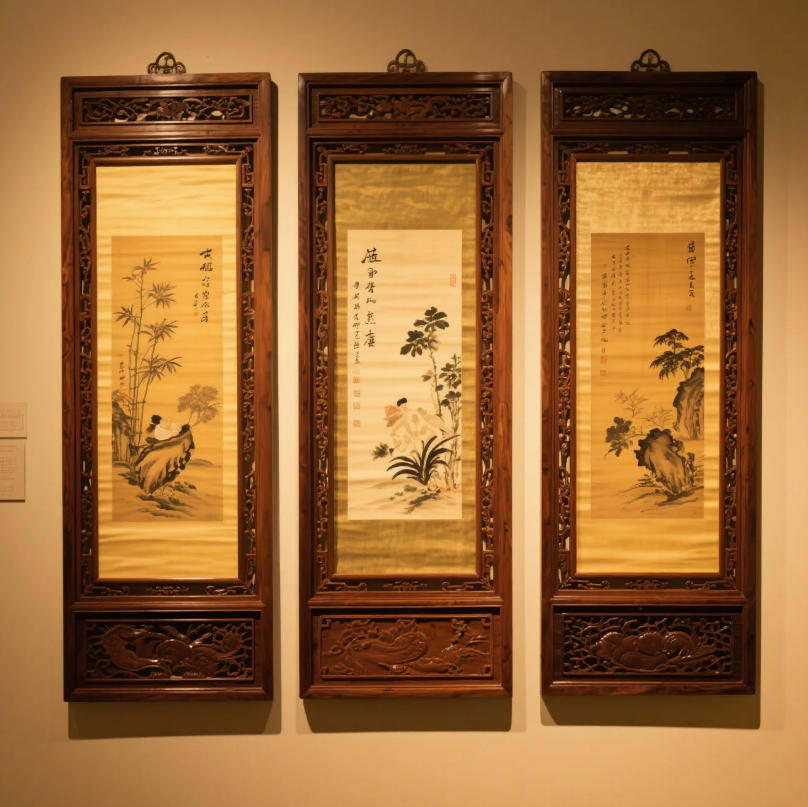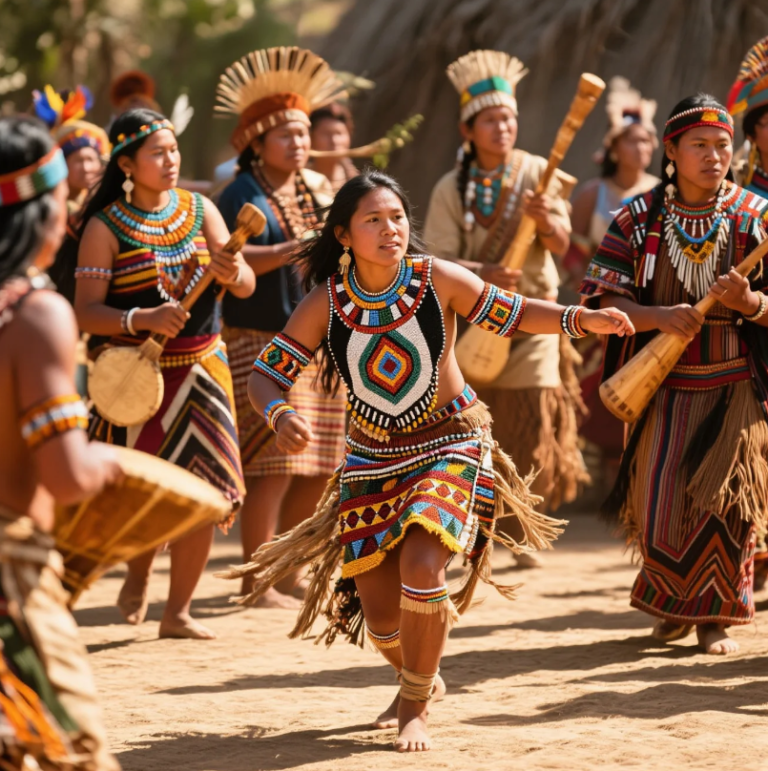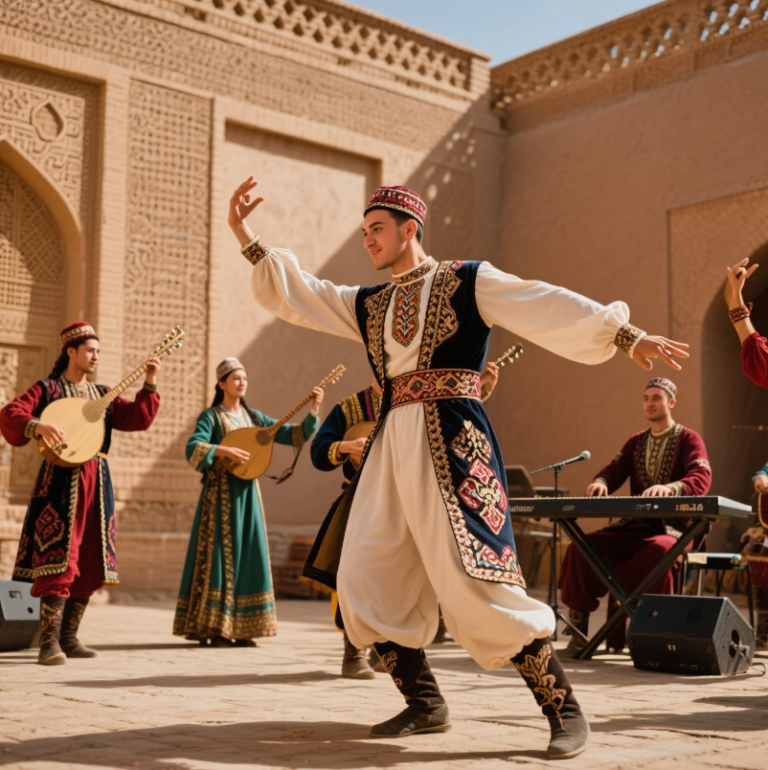
In today’s fast-paced world of design, where trends come and go faster than you can say “minimalist chic,” there’s a surprising source of inspiration that remains timeless and ever-relevant: traditional art forms. Yes, those centuries-old patterns, colors, and craft techniques aren’t just relics of the past collecting dust in museums. They’re the secret sauce behind some of the most captivating contemporary designs worldwide. From fashion runways in Paris to tech gadgets in Silicon Valley, traditional art is proving it’s anything but old-fashioned. So buckle up, because we’re diving into the fascinating journey of how ancient crafts are shaping the future of design—one brushstroke, stitch, and motif at a time. 🎨✨
The Living Legacy: Why Tradition Still Matters
Before we jump into the glossy world of modern design, let’s set the stage. Traditional art forms are the creative expressions that have been passed down through generations. Think Japanese ukiyo-e woodblock prints, intricate Indian block prints, African beadwork, Native American pottery, and countless others. These are not just beautiful objects; they are cultural narratives—stories of people, places, and values encoded in color and shape.
What’s incredible is how designers today are tapping into these stories to create pieces that resonate emotionally with consumers craving authenticity and meaning. In a world overwhelmed by mass-produced sameness, traditional art offers a unique fingerprint, a sense of identity and soul. It’s like the difference between a fast-food burger and a lovingly crafted homemade meal.
Traditional Meets Trendy: When Old School Gets Cool Again
You’ve probably noticed this: the coolest designs these days often nod to the past. Ever wondered why tribal prints keep popping up in fashion? Or why minimalist Scandinavian design incorporates rustic wooden textures? There’s a reason for that.
Fashion: From Runways to Streetwear
High fashion has a long love affair with traditional art. Designers like Stella Jean, Dries Van Noten, and even Gucci’s Alessandro Michele regularly infuse their collections with indigenous patterns and traditional embroidery techniques. Stella Jean’s Haitian-Italian fusion garments, for example, mix Caribbean vibrant prints with European tailoring, telling a story of multicultural identity.
Streetwear brands have jumped on the bandwagon too. Think of how Native American beadwork or African Kente cloth patterns are reimagined in hoodies, sneakers, and hats. This blending doesn’t just look cool—it celebrates cultural pride and raises awareness about heritage in a way that’s accessible to a global audience.
Interior Design: When Your Walls Tell Stories
Walk into any trendy café or boutique hotel, and chances are you’ll see traditional art influences everywhere—from handwoven Moroccan rugs to Japanese shibori-dyed cushions. Designers incorporate these crafts not just for aesthetic appeal, but because they add texture, warmth, and a story to the space.
The Japanese concept of “wabi-sabi,” which embraces imperfection and natural beauty, has heavily influenced minimalist design worldwide. It’s no coincidence that rustic ceramics and organic textures are so popular—they’re the perfect antidote to cold, sterile interiors.
Tech Meets Tradition: A Surprising Mashup
Now, you might think tech design is all about sleek metal and glass. But even here, traditional art sneaks in. Think about smartphone cases adorned with indigenous motifs or smartwatches with straps inspired by traditional weaving. Brands know that blending heritage with technology appeals to consumers who want the best of both worlds: cutting-edge innovation wrapped in cultural authenticity.
Why Are Designers So Hooked on Traditional Art?
There’s more than nostalgia at play here. Designers are driven by:
- Storytelling: Every traditional pattern carries a history, a meaning, or a ritual. Using them creates a narrative that consumers connect with emotionally.
- Sustainability: Many traditional crafts use natural materials and sustainable techniques, aligning with the eco-conscious values of modern buyers.
- Uniqueness: Handcrafted details and artisanal imperfections make products stand out in a sea of identical factory-made goods.
- Cultural Respect: When done thoughtfully, incorporating traditional art fosters cross-cultural appreciation and helps keep ancient crafts alive.
Case Study: Indian Block Printing Takes Over Global Fashion
If there’s one traditional art form making waves today, it’s Indian block printing. This painstaking process involves carving intricate patterns onto wooden blocks, dipping them in natural dyes, and stamping them onto fabrics. The result? Gorgeous, handcrafted prints full of character.
Brands like Anthropologie and luxury designers like Sabyasachi Mukherjee have brought block prints to international attention, combining centuries-old techniques with modern silhouettes. What’s more, many artisans benefit from this revival, earning sustainable incomes and preserving their craft traditions.
When Cultural Appropriation Turns Into Appreciation
It’s worth noting that borrowing from traditional art can be tricky territory. The fine line between cultural appreciation and appropriation is one designers must navigate carefully. The key? Respect, collaboration, and credit.
Some brands partner directly with artisans, ensuring they get a fair share of profits and recognition. Others delve deep into the cultural context to avoid misrepresentation. When done right, these collaborations can empower communities and keep traditions vibrant.
DIY Inspiration: Bringing Traditional Art into Your Life
Don’t have a fashion budget that rivals a celebrity stylist? No worries. You can sprinkle traditional art into your everyday life without breaking the bank:
- Home Decor: Add a tribal print pillow, a handwoven basket, or a vintage tapestry to your space.
- Fashion: Mix and match modern basics with accessories featuring indigenous beadwork or embroidery.
- Digital: Support artists selling traditional art prints on Etsy or Instagram.
- Craft: Try your hand at block printing or pottery through local workshops.
Even small touches bring a rich story to your daily surroundings.
The Future of Design: Tradition + Innovation = Magic
So where do we go from here? As technology advances and the world shrinks, the fusion of traditional art and contemporary design will only deepen. We’ll see more augmented reality apps that showcase cultural histories behind designs, AI-powered platforms helping artisans reach global markets, and eco-friendly materials inspired by age-old crafts.
Traditional art forms remind us that good design isn’t just about aesthetics—it’s about meaning, community, and sustainability. When designers embrace this philosophy, they create work that’s not only beautiful but also profoundly human.
Traditional art is far from being a dusty museum piece. It’s a vibrant, living source of inspiration shaping modern design across the globe. Whether it’s a kimono-inspired jacket, a hand-carved wooden chair, or a smartwatch with a woven strap, the legacy of craftsmanship enriches our lives, making every piece a story worth telling. So next time you spot that cool pattern or unique texture, remember—it’s a nod to centuries of creativity, culture, and connection.
Ready to explore your own design journey inspired by tradition? The canvas is waiting! 🎨🌍



